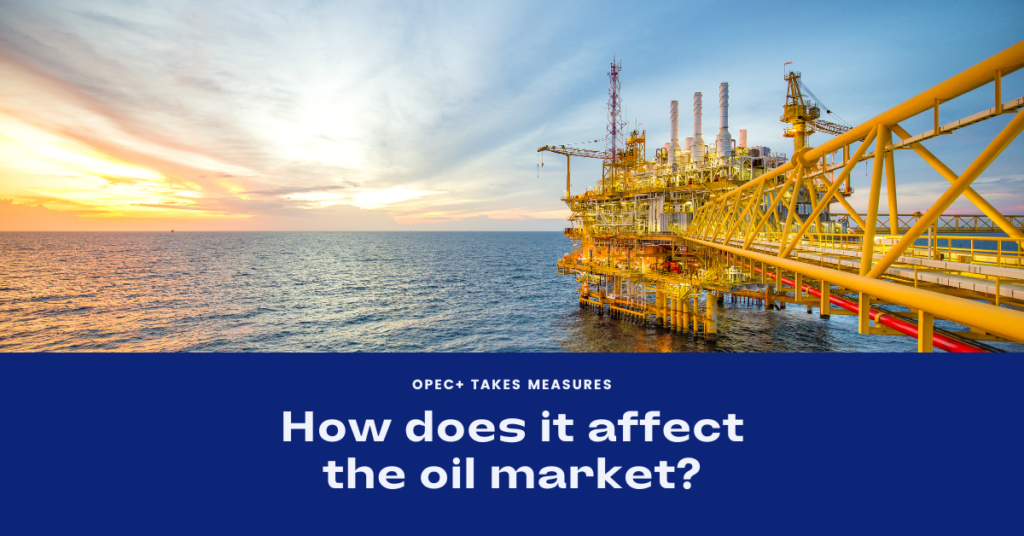In the dynamic realm of global oil markets, a recent surge in discussions surrounding enhanced collaboration among key oil-producing nations has sent ripples through the industry. As we explore the aftermath of the latest OPEC++ meeting and its implications, the keyword on everyone’s lips is “OPEC+ Measures.” Against the backdrop of plummeting oil prices, this blog post unveils the intricacies of the recent talks between Russian and Saudi leaders, shedding light on the potential impact of proposed measures and the nuances that shape the future of crude markets.

The OPEC+ measures: Behind Closed Doors
In the corridors of power, where economic giants meet, recent interactions between Russian President Vladimir Putin and Saudi Crown Prince Mohammed bin Salman have set the stage for intensified collaboration among members of the Organization of Petroleum Exporting Countries and allies (OPEC+). The backdrop? A precarious oil market that witnessed a freefall in prices after the unveiling of OPEC’s new production cuts for 2024.
While Saudi Arabia and Russia have been at the forefront of supply cuts to support crude prices, the latest OPEC+ meeting exposed a divergence in enthusiasm among member states. The reluctance to decrease production stems from concerns about the impact of cuts on national revenue streams. The result? OPEC+ declared less than 1 million barrels per day of new cuts for 2024, with a significant portion being voluntary.
Oil Prices on a Rollercoaster: From Tumble to Tremor
The aftermath of the OPEC+ meeting sent shockwaves through the oil market, plunging prices to their lowest since early July. The global economic landscape, marred by uncertainties, contributed to the downward spiral. Brent oil futures and West Texas Intermediate crude futures, however, showed a glimmer of recovery, rising to $74.63 and $69.99 a barrel, respectively.
Despite the underwhelming impact of the cuts, analysts anticipate a marginal tightening of crude markets in the first quarter of 2024. Expectations loom that Brent will trade in the low $80s early in the year. But what factors continue to influence the delicate balance of supply and demand in the oil market?
Demand Conundrum: Economic Readings and Global Concerns
A string of lackluster economic readings from key regions like Asia, the U.S., and the euro zone fuels concerns about sluggish crude demand in the months ahead. An uninspiring ADP nonfarm employment report signals a cooling U.S. labor market, while a substantial increase in gasoline inventories paints a grim picture of declining fuel demand, particularly in the world’s largest fuel consumer.
U.S. gasoline futures hit a near two-year low following the inventory report, even as oil production in the country maintains its resilience. The broader market focus now shifts to crucial oil import data from China, set to be unveiled later, and the upcoming U.S. nonfarm payrolls data. The looming question: Can these indicators provide a glimmer of hope amid the prevailing economic uncertainties?
OPEC+ Voluntary Production Cuts: An Unsettled Market Responds
As oil prices teeter on the edge, the recent voluntary production cut of 2.2 million barrels for Q1 2024 by OPEC+ adds a layer of complexity. While the cut triggered a drop in the U.S. crude oil benchmark below $70.00 per barrel, concerns over demand overshadowed the positive impact. Saudi Arabia and Russia, key players in the OPEC+ narrative, hint at a potential extension of these cuts beyond March, further influencing market sentiments.
In the aftermath of an upbeat U.S. inventory report, which revealed a significant rise in gasoline stockpiles, the market seems more demand-focused than supply-focused. Analysts point to imminent demand destruction, echoing uncertainties surrounding fuel consumption. China’s economic recovery and subsequent concerns, exacerbated by a negative outlook from rating agency Moody’s, add yet another layer to the intricate puzzle of oil markets.
Charting the Course: WTI’s Technical Outlook
A glance at the technical landscape reveals WTI in a downtrend, with bears firmly in control. The breach of last year’s low of $70.10 has paved the way for further downside, with key support levels at $67.10 and $66.85. On the flip side, a resurgence above the $70.00 barrier could offer a ray of hope, potentially testing the November 16 daily low of $72.22.
Conclusion:
As we navigate the twists and turns of the oil market, the discussions around “OPEC+ Measures” take center stage. The aftermath of the latest meeting, coupled with global economic uncertainties, continues to shape the delicate balance between supply and demand. While oil prices recover from recent lows, the journey ahead remains uncertain. Will the collaborative efforts of OPEC+ be sufficient to stabilize the market, or are we on the cusp of more profound shifts in the world of oil? Only time will unveil the true impact of the measures discussed behind closed doors, leaving oil enthusiasts and market watchers on the edge of anticipation.
